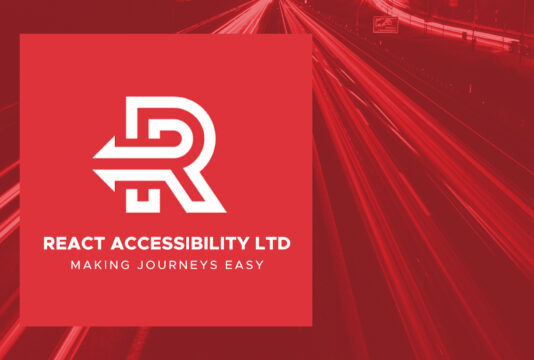
Meet the Papercast CMS Layout Catalogue: A must have resource for sharing visually impactful passenger information
We’re excited to tell you about the Papercast Content Management System (CMS) Layout Catalogue, an…

Providing passengers with timely and relevant information is at the core of the customer satisfaction strategy of every bus operating company or public transport provider. Improving the provision of real-time information demonstrably increases customer satisfaction and the perception of the transit agency. From the customer perspective, it reduces the time spent waiting, lessens frustration and enables them to make informed decisions about taking alternative routes or modes.
Service operators that get this right are well on their way to resolving some of the most frustrating issues that bus users face. In this article, we explore the future needs of bus stop passenger information as new technologies such as e-paper come to the market, with Robert Bicket, CEO of Papercast, Bogdan Pavlic, COO at Papercast and Rado Skender, Director at Papercast.
Many service operators have invested heavily in recent decades to improve both the passenger experience and the perception of public transport, always with the end game insight – to increase the number of users and journeys taken by bus.
Passenger information has long played an important role in this, but the bus sector now stands on the brink of a step change that could transform the industry. As open data standards become more widespread, technical innovation is driving digitisation in all facets of real time passenger information delivery, resulting in improved outcomes for both the service operator and the customer.
To this end, public transport agencies and bus operators are looking for ways to cost-effectively harness the available technologies, to deliver information to customers at all possible touchpoints – on personal devices, in bus stations and at bus stops.
Technology is influencing every corner of our life and this also applies to how we travel. “Most of us have an app on our smart phone with service and schedule information. We plan around this, so we want information to be current and live. We expect to see the same information at the bus stop – if it says there is a bus due, we want to see it coming down the road,” says Bogdan Pavlic, Chief Operations Officer at Papercast.
“This creates enormous pressure for public transport agencies to have accurate data on bus arrivals, as well as the platform to deliver the content to the right place at the right time.”
Robert Bicket, Chief Executive at Papercast, agrees and adds: “Uber and other similar services have completely changed expectations when it comes to visibility over your trip. People just want to be better informed, they know the information is out there and they want it at their fingertips. Another sign of the times is that people are quick to express their frustration on social media when they feel let down, and we see this happening a lot. This can be quite damaging to the reputation of the service provider”.
“We see the future moving towards omni-channel and with higher levels of accuracy,” says Bogdan. “This is where accurate real-time information becomes widespread and not only on smartphones and websites but on all elements of travel – bus stations, the bus stop and on the bus. Information must be accurate, delivered in real-time to all touch-points and presented in a user-friendly manner. This is essential in managing passenger expectations and therefore their overall experience.”
According to Rado Skender, Director at Papercast this requires two key elements. Firstly, processing information streams in real-time, evaluating them and improving accuracy. This applies to arrival times, travel times and incidents so that the passenger receives trustworthy information through all channels. Secondly, the technology to manage the physical dissemination of content to the bus stop and the bus, providing important information in a user-friendly format. “Users face more choice than ever before. While public transport has become the backbone of transport infrastructure, there is strong competition amongst mobility types. Each has to adapt to keep pace with other more advanced alternatives,” comments Rado
Public transport agencies and operators are currently at a crossroads, experimenting with a variety of display technologies in the knowledge that their current methods for delivering passenger information are due for a complete overhaul. But what challenges do operators face in upgrading legacy platforms or implementing a new digital platform?
Bogdan believes that data quality and completeness presents a big challenge. Many systems are not fine-tuned for open-data environments and agencies need audit tools to truly understand the quality of the data they are disseminating. “While companies like Uber are deploying the latest technologies, most public transport agencies have platforms that were designed 10-20 years ago. There is a chasm between the closed internal systems and ability to innovate on open data platforms.” This needs to be addressed as a priority, particularly as new legislation drives many markets towards open data standards.
According to Robert, technological innovation in all areas of our lives is causing customer expectations to snowball.

“In the world of digital passenger information this means more informative and reliable data delivered instantly to more sophisticated display technologies that need to perform outdoors, often in sunny environments”
Robert Bicket
Traditional LED signage lacks the sophistication and the alternative LCD screens both struggle in direct sunlight and have exceptionally high power demands.
Additionally, infrastructure upgrades have always been expensive, not only with the investment in technology but also with major works needed to install technologies in the physical environment. “The primary consideration here is power access. Even if power is available on location it is extremely cumbersome to connect to it, not to mention expensive. The same applies for data connectivity. Addressing this is critical,” says Rado.
And so, the search begins for a technology that presents real-time passenger information in a digital form, better than anything else on the market. “It is also important to preserve an ethos of flexible, self-sustainable and continually improving transport technologies,” says Robert.
As an established provider of information systems delivering industry leading passenger arrival time predictions, Papercast saw an opportunity to move along the value chain from integrator to creator. The team noted that e-paper was making inroads in digital signage. “We have strong engineering capabilities that are empowered to innovate. The team started experimenting with e-paper to see if the technology could be efficiently applied to bus stops,” says Bogdan. E-paper has proved to be the perfect solution due to two major factors – it is self-sustaining on solar power due to ultra-low power consumption and has razor sharp image depiction with high readability, even in direct sunlight.

“This makes e-paper a great energy-saving alternative to conventional displays and, together with low power wireless communication, it offers the complete package”
Bogdan Pavlic
“Our vision was to commoditise bus stop information and while the concept sounds easy it has proved to be a journey. We believed ‘it’ had to be a stand-alone unit that would be easy to install, seamlessly integrate with the source of real-time passenger information, have the flexibility to present content without hiring a system integrator and be sustainable with a low total cost of ownership,” comments Rado.
The team invested years into developing the electronics and software behind the platform, from content management and power optimization to content rendering and enhancing the performance of all aspects of the display. Not to mention housing design that is scalable and applicable to different customer environments, will sustain all environmental conditions and be visible at night without external lighting.
“We launched an early release of the platform just over a year ago, under pilot in eight countries globally we have gained valuable insight that has informed intensive development. We are immensely proud of the latest release of Papercast, the team has enhanced performance beyond expectation,” adds Robert.
Bogdan reminds us that e-paper displays have other differences to legacy systems. “They are much more open, i.e. information can come in non-proprietary formats such as ubiquitous HTML. Our advantage is that we were already on the open standard, this allowed us to utilise our existing stack to build something new from the scratch.
”Papercast delivered what it set out to achieve. “Finally, there is a technology that can provide real-time access to information without breaking the budget for public transportation providers,” says Robert.
The Papercast display is completely standalone, can be retrofitted to existing infrastructure and requires no physical connection to data or power supply, negating the need to carry out any groundworks.

“It can be installed with minimal cost, in a matter of hours and with absolutely no disruption. You can literally put it anywhere, including previously unserviceable sites such as rural locations where no mains fed power source is available”
Rado Skender
With Papercast’s sophisticated management platform, operators have complete control over the content delivered via wireless connectivity, the possibilities are virtually limitless compared to current binary platforms. “We offer instant open data integration supporting standards such as GTFS and SIRI, combined with a range of predefined apps and the freedom to integrate custom content apps. Additionally, our Better ETA optional enhanced analytics enables operators to normalise AVL data to improve the accuracy of bus arrival predictions,” adds Bogdan.
When asked about Papercast’s vision, Robert concludes: “We aim to bring fully autonomous, solar powered, internet connected e-paper displays to the greatest possible number of bus stops around the world, displaying accurate and reliable real-time passenger information”.
“Working with you to improve customer experience and overall utilisation of public transport by keeping passengers more reliably informed, by helping as many service providers as possible to transition to next generation technologies”

We’re excited to tell you about the Papercast Content Management System (CMS) Layout Catalogue, an…

The REACT Trigger System is now available on Papercast displays We’re excited to share that…